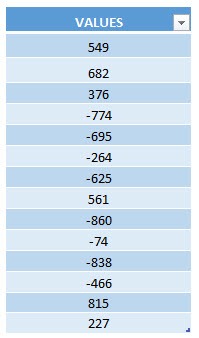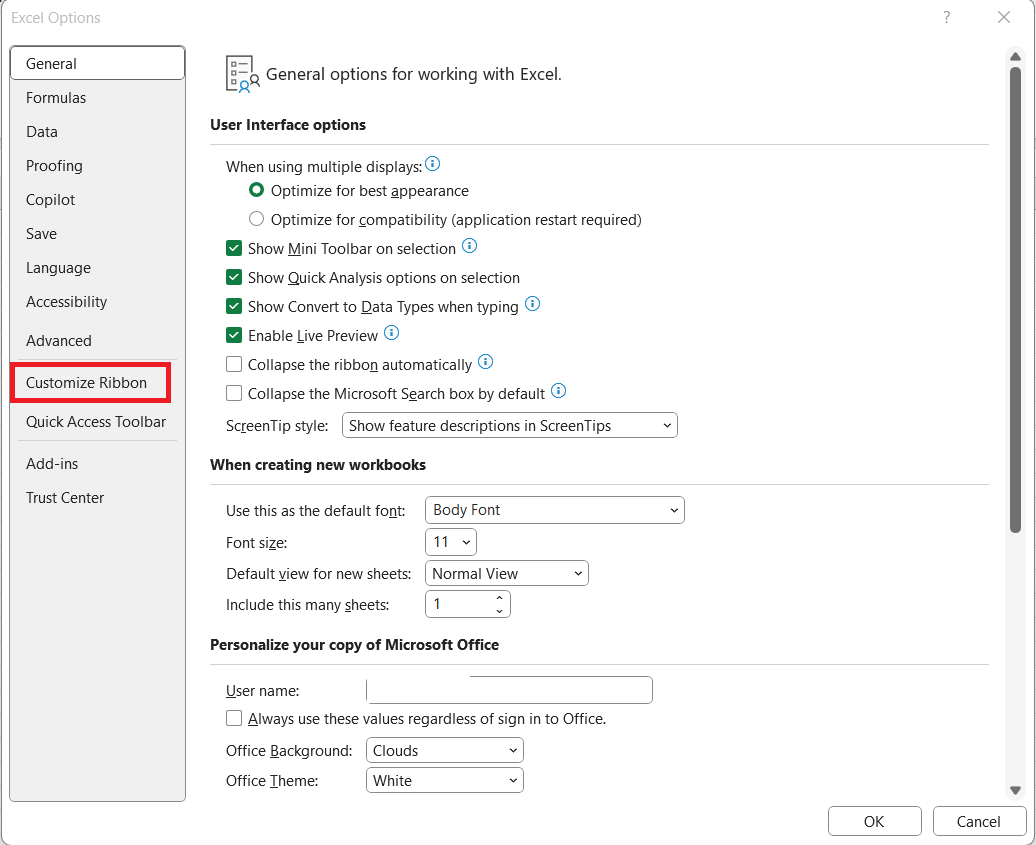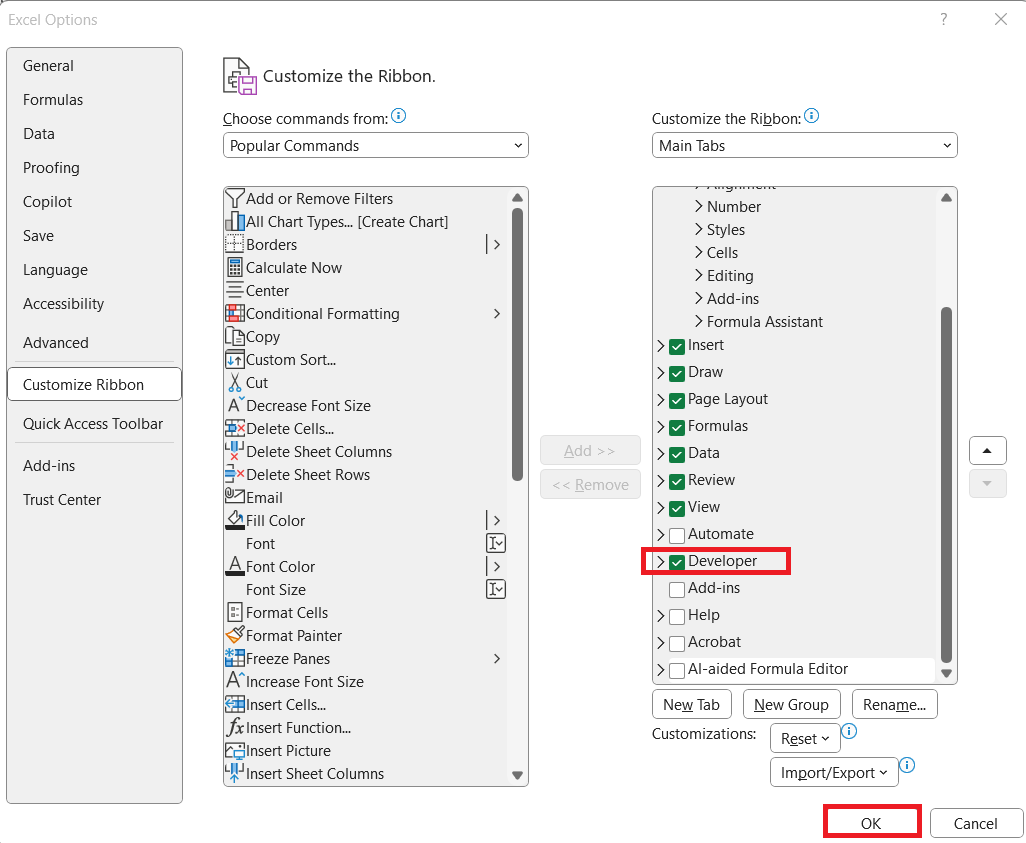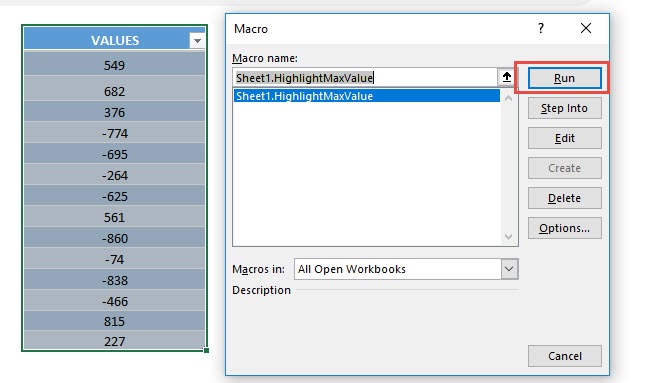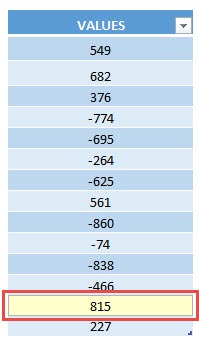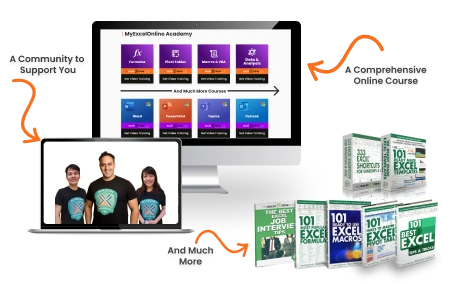I’ve always been fascinated by how much time I can save by automating repetitive tasks in Excel. At some point, I realized that instead of manually hunting for the maximum value in a dataset and then highlighting it, I could create a macro to do it for me instantly. This not only cuts down the time I spend but also reduces the chances of human error.
In this article, I’ll walk you through how I highlight max value in selection using macros in Excel.
Key Takeaways
- Macros in Excel allow me to automate tasks like highlighting the largest value in seconds.
- Writing a small VBA script makes the process repeatable and foolproof.
- Using the Developer tab is essential since it’s the gateway to creating and running macros.
- Highlighting the maximum value in a selection helps me visualize data trends instantly.
- Once set up, this macro can be reused across different sheets and projects with ease.
Exercise Workbook:
Table of Contents
Preparing Your Data
Initial Dataset
To start, I always make sure my dataset is organized. For this example, I used a small set of numbers:
The goal was clear: I wanted the maximum value, to stand out without me having to manually scan through the numbers. It might seem trivial with a small dataset, but this method shines when dealing with hundreds or thousands of rows. Before running any macro, I ensure my data is clean. Blank cells, text entries, or inconsistent formatting can interfere with the macro. I remove any blanks or irrelevant data and check that all values are numeric. This small step prevents errors and ensures the macro runs smoothly the first time.
Accessing the Developer Tab
STEP 1: Go to File > Options > Customize Ribbon.
STEP 2: Check the box for “Developer” to make the tab visible in Excel.
The Developer Tab is now visible.
Highlight Max Value in Selection Using Macros
STEP 1: Go to Developer > Code > Visual Basic
STEP 2: Paste in your code and select Save. Close the window afterwards.
Sub HighlightMaxValue() Dim cell As Range For Each cell In Selection 'If it matches the highest value, then change the style to be Note If cell = WorksheetFunction.Max(Selection) Thencell.Style = "Note" End If Next cell End Sub
STEP 3: Let us test it out!
Open the sheet containing the data. Go to Developer > Code > Macros
Make sure your data and right macro are selected. Click Run.
With just one click, your cell with the largest value is now highlighted!
Using and Maintaining Your Macro
Tips & Tricks
- Sometimes, blank cells in the selection can cause the macro to behave unexpectedly. To prevent this, I either clean my data or adjust the macro to skip blanks.
- Another tip is to save the macro in the Personal Macro Workbook if I want it available across multiple workbooks.
- I can modify the macro to highlight the minimum value, the top 3 values, or change the highlight style. This allows me to tailor the macro for different datasets or reporting requirements without changing its core logic.
Practical Applications
- Highlighting the top-selling product or the largest expense instantly helps me focus on what matters most. It saves me time in reporting and improves accuracy in decision-making.
- Highlighting the highest marks in a class makes it easy to track top performers and quickly assess overall performance trends. This visual cue is invaluable in large datasets.
- Identifying the most profitable project or client by instantly spotting the maximum revenue in a dataset.
- Quickly recognizing the longest task duration in a project timeline to prioritize workflow improvements.
- Spotting the highest stock price in financial analysis makes trend spotting and reporting more efficient.
- Highlighting the most significant increase in monthly sales or production metrics helps me identify patterns and anomalies.
- Instantly seeing the largest donation or contribution in a fundraising dataset helps in creating accurate reports.
FAQs
What is the purpose of using a macro to highlight max value in selection in Excel?
Using a macro to highlight the maximum value in Excel saves me time and reduces human error. Instead of scanning through large datasets manually, the macro instantly identifies the largest number. It also ensures consistency, so the result is accurate every time. This is especially helpful in reports, budgets, or performance data where missing the top value can be critical. Overall, it makes data analysis faster and more efficient without extra effort.
How do I enable the Developer tab in Excel to use macros?
I start by going to File > Options > Customize Ribbon. Then, I check the box labeled “Developer” to make the tab visible. Once enabled, the Developer tab provides access to Visual Basic, Macros, and other automation tools. This step is essential because macros cannot be created or executed without it. After enabling, I can immediately start writing and running VBA code.
How do I write and save the macro to highlight the max value?
I open the VBA editor by going to Developer > Code > Visual Basic. Then, I insert a new module and paste the macro code. After that, I save the module and close the editor. The macro is now stored in the workbook and ready to use. This allows me to run it whenever I need to highlight the maximum value.
How do I run the macro on my data selection?
First, I select the range of cells that contains my dataset. Next, I go to Developer > Code > Macros, select the macro HighlightMaxValue, and click Run. The macro then automatically highlights the cell containing the highest value. This step takes just a few seconds, even for large datasets. The visual cue immediately shows the maximum number without manual searching.
What are some practical applications of this macro?
I use this macro in business to highlight top-selling products or the largest expenses for quick decision-making. In education, it helps me spot the highest student scores instantly. I also use it to identify profitable clients, longest project durations, and peak stock prices. It can highlight top increases in monthly sales or donations in fundraising datasets. Essentially, it turns raw numbers into immediately actionable insights across multiple contexts.

Bryan
Bryan Hong is an IT Software Developer for more than 10 years and has the following certifications: Microsoft Certified Professional Developer (MCPD): Web Developer, Microsoft Certified Technology Specialist (MCTS): Windows Applications, Microsoft Certified Systems Engineer (MCSE) and Microsoft Certified Systems Administrator (MCSA).
He is also an Amazon #1 bestselling author of 4 Microsoft Excel books and a teacher of Microsoft Excel & Office at the MyExecelOnline Academy Online Course.

